 |
 |
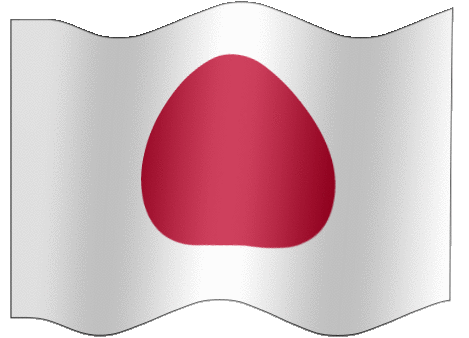 |
Let's be more moved - turn a trip of sights into a trip of feeling!
Explore Aomori pref. in the Tohoku Region

|
|
|
  |
HIROSAKI
|
| Free estimates Free travel consultation |
|
|
|
|
|
|
| #02D101 |
|
|
|
|
|
| Apple City |
The largest apple harvest city in Japan |
|
|

Hirosaki is the number one producer of apples in Japan, and its catchphrase is "Hirosaki, the apple-colored city". At Hirosaki Apple Park, where you can enjoy apples with all five senses - sight, hearing, smell, touch, and taste - there are about 2,300 apple trees of 80 varieties planted on the vast grounds. In early May, when the apple blossoms are in full bloom, the park holds the Hirosaki Apple Flower Festival. During the festival, there will be free distribution of baked apples, a chance to try picking apples, and live entertainment such as live Tsugaru shamisen performances. You can also try harvesting (for a fee) from early August to early November. Admission is free.. |
 |
|
|
|
|
|
|
|
| #02D201 |
|
|
|
|
|
| TSUGARU Shamisen |
one of Japanese musical instruments |
|
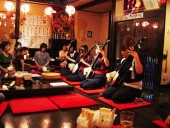
|

Tsugaru shamisen is a type of shamisen music that originated in the Tsugaru region (present-day western Aomori prefecture). The shamisen is a Japanese stringed instrument with a neck and a plucked instrument that is played primarily by plucking it. It was originally used to accompany folk songs from the Tsugaru region, but in modern times it is often called "Tsugaru shamisen" specifically to refer to solo performances. It is characterized by a percussion-like playing style in which the plectrum is struck by hitting the instrument, and songs with a fast tempo and many notes. There are also izakaya restaurants in the city where you can enjoy live Tsugaru shamisen music. Tsugaru Shamisn World cup is usually held in early May in Hirosaki. Its admission tickets are sold at the venue's box office on-site. Advance tickets are not available. |
 |
|
|
|
|
|
|
|
| #02D102 |
|
|
|
|
|
| Mt. OIWAKIYAMA (Mt. IWAKI) |
the beautiful and highest mountain in the pref. |
|
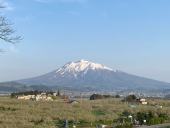
|

Mt. Iwaki is a conical stratovolcano with three peaks at its summit, and is the highest peak in Aomori Prefecture and has been selected as one of the 100 most famous mountains in Japan. This beautiful mountain is also known as Tsugaru Fuji, and like Mt. Fuji, it has long been an object of mountain worship, with a shrine at its summit. As an independent peak, a 360-degree view can be enjoyed from the summit. There are many hot springs at the foot of the mountain, and the swamps and marshes that lie between the hot springs are known for their large colonies of dainty skunk cabbage. |
 |
|
|
|
|
|
|
|
| #02D202 |
|
|
|
|
|
| HIROSAKI NEPUTA Festival |
a festival that pull floats and parade |
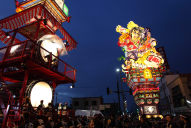
|

The Hirosaki Neputa Festival is a summer festival representing this area, which first appeared in written records over 300 years ago. It is held every year from August 1st to 7th, and usually attracts more than 1.6 million visitors. While Hirosaki's Neputa are called "neputa," Aomori's Neputa are written and pronounced as "nebuta." In terms of shape, Hirosaki's Neputa are mainly fan-shaped, while Aomori's Nebuta are known as doll lanterns. At the Hirosaki Neputa Festival, which is an Important Intangible Folk Cultural Property of Japan, about 80 large and small Neputa decorated with heroic warrior paintings, Kagami-e, and melancholy Misorie-e are paraded through the castle town of Hirosaki to the chant of "Yaya-yado." |
 |
|
|
|
|
|
|
|
| #02D203 |
|
|
|
|
|
| Historical Streetscape in HIROSAKI |
SAMURAI quarter |
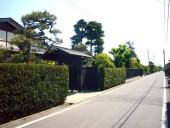
|

Nakacho, located north of Hirosaki Castle (Nakacho is the name of the old castle town located on the north side of Hirosaki Castle; it is not the name of the place in the current address), has been designated as an Important Preservation District for Groups of Traditional Buildings by the national government. Many of the land divisions used in the development of the castle town during the Edo period remain to this day, and the Sawara (a kind of cypress like cedar) hedges along the roads, the scattered gates, wooden fences, and front gardens create a unique landscape that continues to retain the atmosphere of a castle town. Nakacho's value lies in the fact that it was a town where middle and lower-class samurai lived. Almost none of the homes of many of these middle and lower-class samurai remain, and not much is known about their lives, but Nakacho is a town where you can get a sense of what life was like for these samurai. |
 |
|
|
|
|
|
|
|
|
|
|
|
|
|
|
|
|
|
|
|
|
|
|
|
|
|
|
|
|
|
|
|
|
 |
 |
|